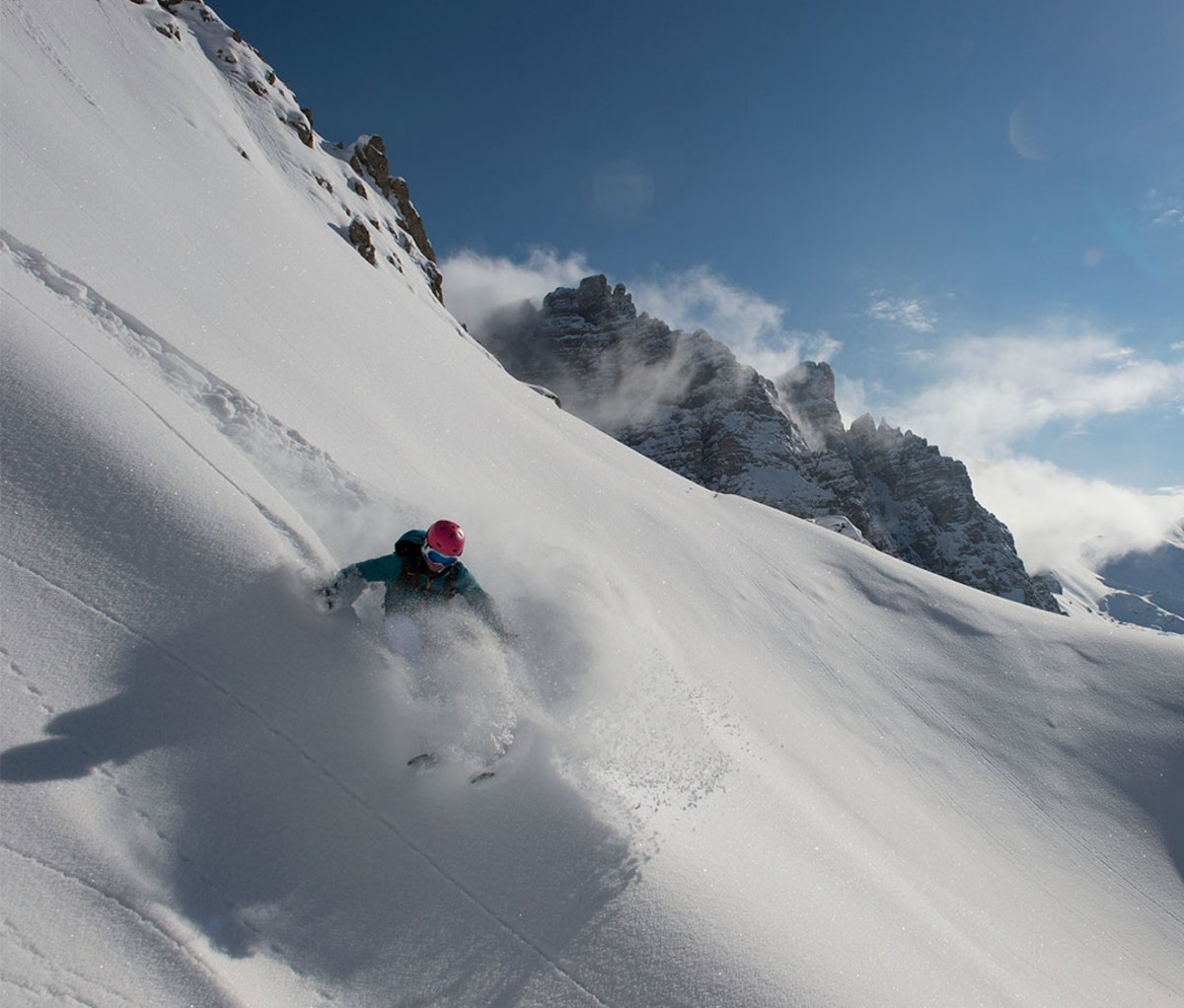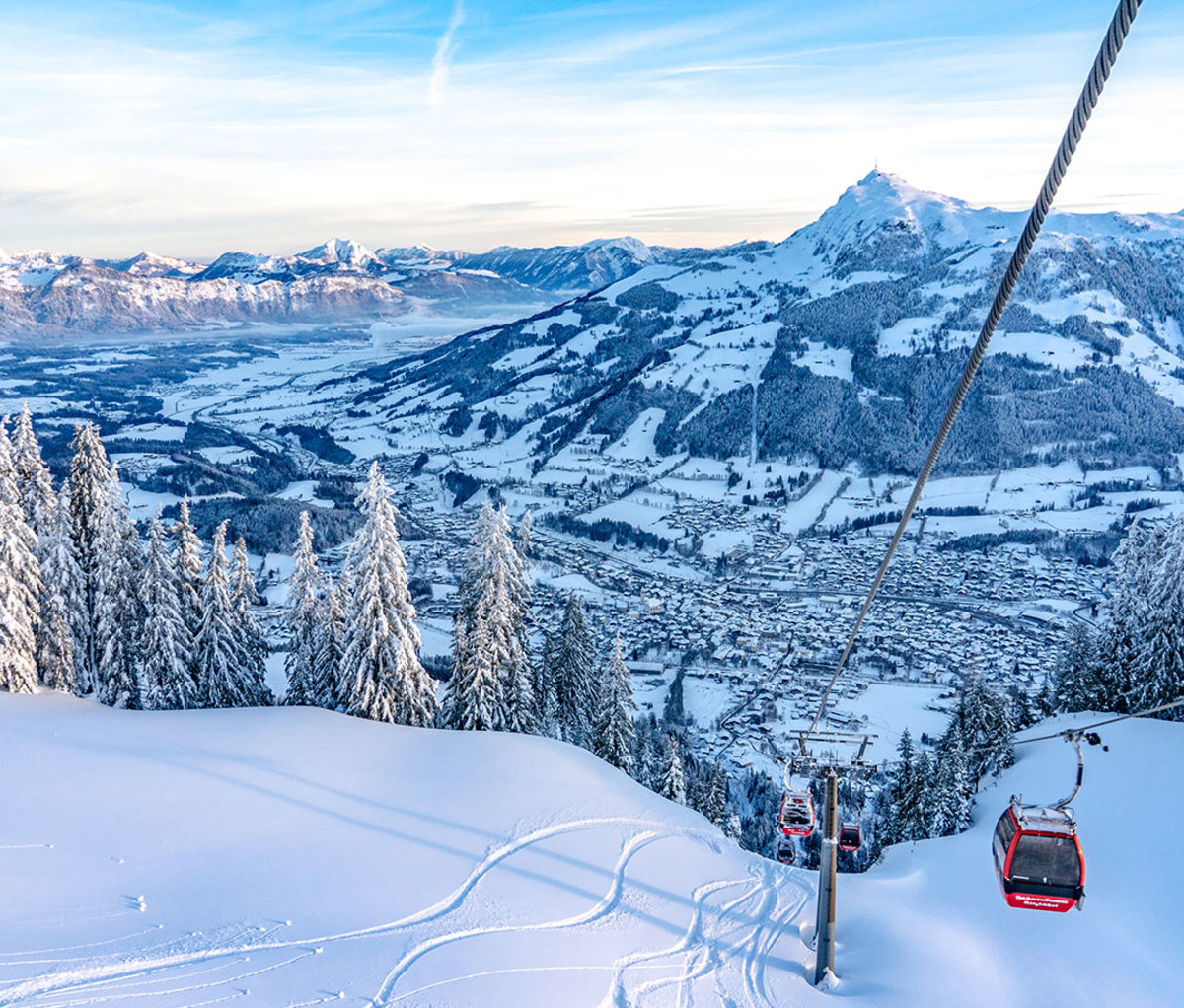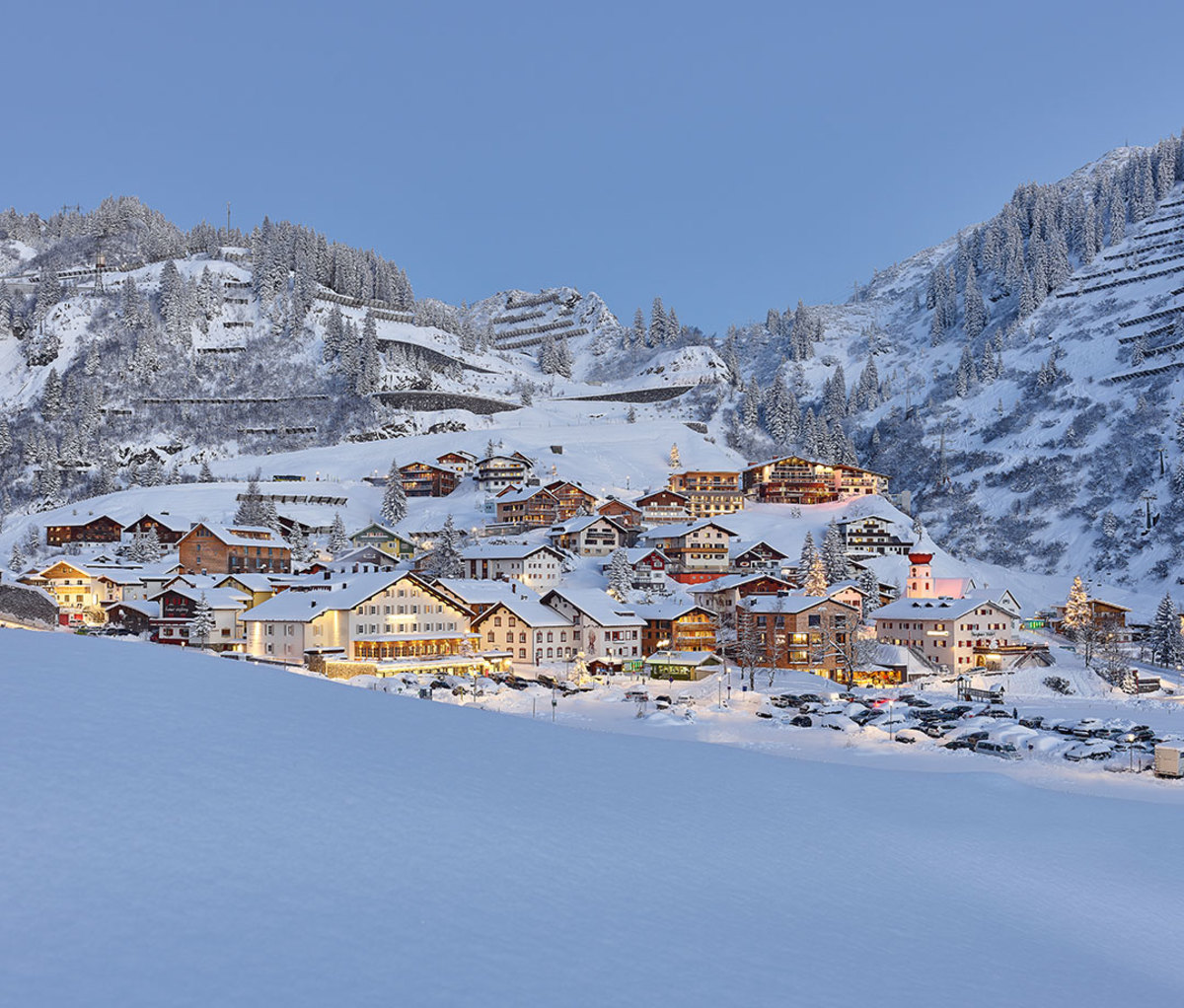This article was published in partnership with Ski.com
Skiing isn’t just an experience in Austria. It’s a way of life. Especially in the Tyrol region of the Eastern Alps, which offers storybook scenery. Skiing here can feel like a simulation. It’s almost too good to be true. With longstanding history and rich culture that embraces not only sport but also food, drink, and community, Tyrol hits the perfect ski trifecta: abundant snow, endless mountains, and an infrastructure that celebrates hospitality.
About that powder: The Austrian Alps boast sure-thing snow conditions. You’ll find scrupulously groomed corduroy, drool-worthy off-piste, versatile terrain, and plenty of vertical. But beginners shouldn’t despair. Austria has been dedicated to teaching skiing since the late 1800s and takes safety as seriously as it does fun. If you’re a neophyte, hire a guide who can help make the most of your ski days, while offering invaluable technical tips.
Austria’s also a fantastic destination if you’re traveling with a mixed group of skiers and non-skiers. Tyrol and its top regions of Arlberg, Innsbruck, and Kitzbühel exemplify how communities thrive when they embrace an outdoor lifestyle. You’ll find abundant Old World charm, whether you’re staying in a five-star hotel, local lodge, or cozy hut tucked high up on the slopes. In contrast to the cookie-cutter, corporate hotels that have taken over many U.S. ski resorts, the norm is family-owned-and-operated accommodations, where it’s a matter of pride that you feel at home.

The Tyrol Region
Austria’s Tyrol has a rich ski culture, with postcard-perfect villages; a relaxed, festive atmosphere; and surprisingly good deals on lift tickets and accommodations.
There are five glaciers and big mountains, many over 12,000 feet. The valleys are wide, with endless smaller peaks that afford perfect terrain for the alpine skier. There are more than 80 ski resorts in the Tyrol region, many interconnected via runs, lifts and gondolas. Here are our top three recommendations.
Learn More
Kitzbühel
For non-skiers, Kitzbühel, in the heart of the vast Wilder Kaiser Mountains, has it all: spas, restaurants, shopping, and a brilliantly colorful village that dates back more than 700 years. But the real business of Kitzbühel is skiing. The ski season lasts 200 days from mid-October through May. There are more than 145 miles of runs that are accessible from the village, so you don’t need a car.
Skiing is exploring in Kitzbühel, as you can ski to dozens of mountain huts and restaurants; stop at one for coffee and a pastry, another for a classic Tyrolean charcuterie board, and yet another for an end-of-day aperitif. There’s a network of nearly 60 gondolas and lifts, with beginner chairs free, plus night skiing every Thursday and Friday on the slopes above Kirchberg. For non-skiers, Kitzbühel has a wealth of off-slope activities including an ice rink, Aquarena wellness center with indoor swimming, and a toboggan run. In addition to first-class accommodations, Kitzbühel boasts an elevated shopping experience. This is where you’ll find many top, local designers such as Sportalm, Frauenschuh, Franz Prader, and MyPierre.
Learn More
Arlberg
People have skied in Arlberg for more than a century. It’s Austria’s largest—and the world’s fifth largest!—ski resort. The region, dominated by Arlberg Pass, has multiple mountains and valleys that are interconnected by 15 aerial tramways, 45 chair lifts, and 28 drag lifts. Five villages make up this unique ski area: St. Anton, St. Christoph, Lech, Zürs, and Stuben.
A single pass gives you access to nearly 190 miles of runs, plus about 130 miles of off-piste (ungroomed) slopes. Don’t miss the Valluga cable car as it delivers you to the top of Valluga mountain, where you get bird’s-eye views of the Austrian, Swiss, and Italian Alps. And don’t forget that skiing means refueling; there are more than 30 Gault Millau award-winning restaurants (most with equally stellar wine cellars) in the region.
St. Anton am Arlberg is home to the Arlberg Ski Technique, developed by the legendary Hannes Schneider in 1912. Schneider’s progressive system of teaching skiing (snowplow, stem, stem Christie, then Christie (parallel turn), helped turn the St. Anton Ski School into the largest in Europe. As such, Schneider is credited for creating professional ski instruction. He became a world-famous ski celebrity and is considered one of the “founding fathers” of U.S. skiing.
Learn More
Innsbruck
There’s a reason Innsbruck has been awarded two winter Olympic Games (’64 and ’76), and why Austria has won more alpine skiing medals than any other country. Innsbruck is a beautiful medieval town that is surrounded by mountains that are a siren’s song for skiers and outdoor explorers.
The Ski Plus City pass provides access to 13 ski areas (Stubaier Gletscher, Axamer Lizum, Skizentrum Schlick 2000, Kühtai, Hochötz, Muttereralm, Bergeralm, Nordkette, Serlesbahnen, Elferbahnen, Patscherkofel, Rangger Köpfl, and Glungezer); 22 city sights (highlights include Bergisel Ski Jump, Swarovski Crystal Worlds, Alpenzoo, and Imperial Hofburg); three swimming pools (think spas and waterparks), and public transportation including a ski bus to all the resorts. It’s easy to fall in love with Innsbruck for its combination of enticing slopes, urban adventure, and beautiful architecture.
Just outside of town, you’ll find 111 lifts and nearly 200 miles of groomed trails. Nearby is Austria’s Stubai Glacier, where the runs start at nearly 10,000 feet above sea level. You can ski the glacier from October through June. In addition to excellent snow, the views are tremendous. On a clear day, you can see more than 109 9,000-plus-foot peaks.
Learn MoreGetting There
Planning an international ski vacation can be tricky. There are so many questions—which airport is most convenient, where do you stay, and how do you juggle lift tickets to make the most of your time? This is where Ski.com comes in. The site is dedicated to providing expert advice and hands-on help for your next ski vacation.
Ski.com is a one-stop shop that makes not only planning, but actual travel, easier. Sixty-five mountain travel experts work for the company, and each has an average of two decades of local’s-only knowledge, plus uncanny abilities to dial in exactly what you’re looking for.
There’s an entire team who knows Austria’s Tyrol like their own backyards. Whether you’re looking for a budget trip, a no-expense-spared dream vacation, or something in between, these experts will help you with everything from flights and lodging to rentals and lift tickets.
And if you need support while out of the country, that’s included in the service. Chances are good you’ll get lower prices with Ski.com than you would on your own as they work with the airlines, resorts, and other travel partners (hence there’s no charge to you). Considering that Austria is one of the best deals in Europe for skiing this year, what are you waiting for?
Book Nowfrom Men's Journal https://ift.tt/WveGUjn


0 comments